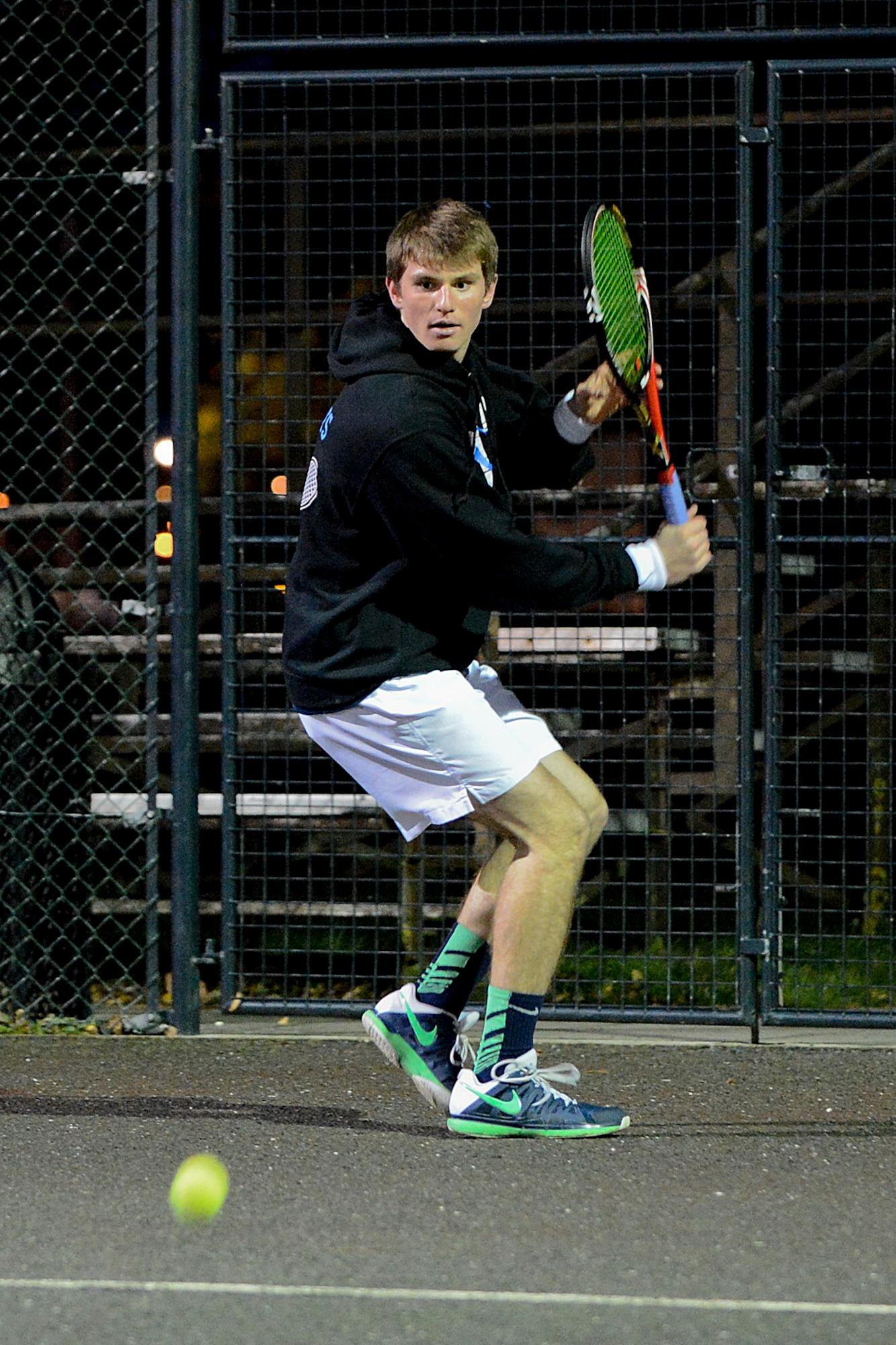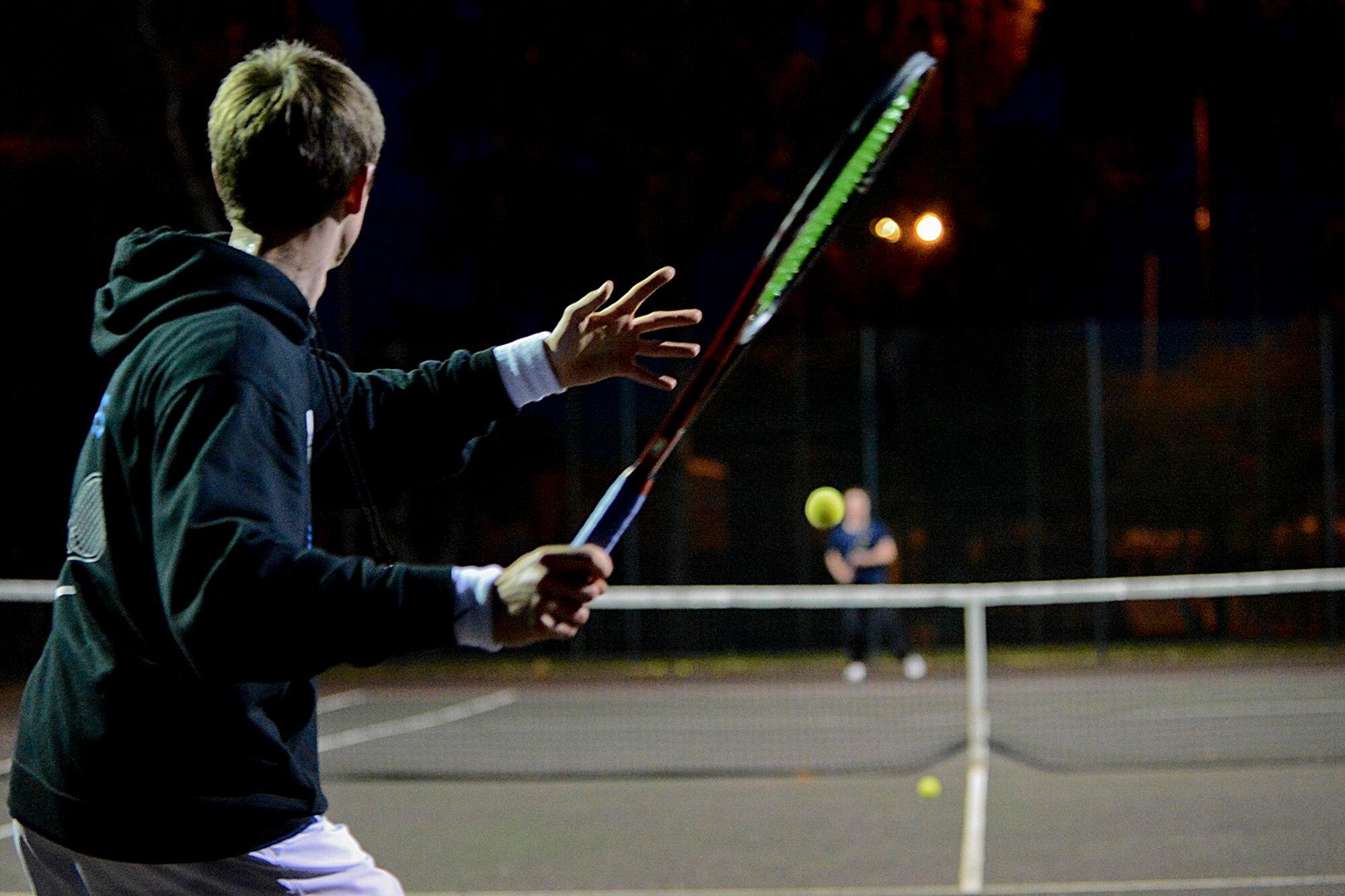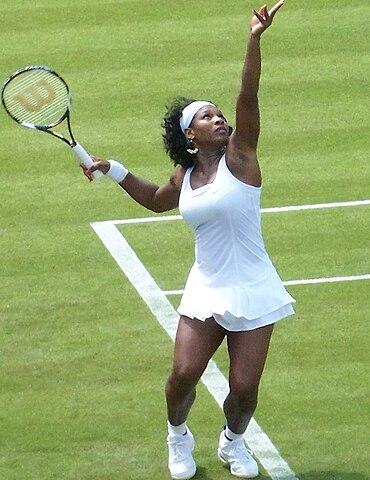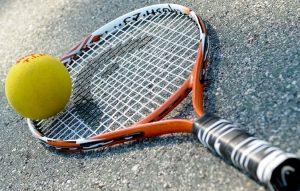We may earn money or products from the companies mentioned in this post.
Who Serves First In Tennis: Understanding the Basics

The concept of service in tennis
In the game of tennis, serving is a fundamental aspect that sets the tone for each point Serving involves hitting the ball into play to start a rally with your opponent It is not only essential for initiating the point but also gives you an opportunity to dictate the pace and direction of the game
Tennis players must master their serve as it forms the foundation of their strategy and can be a potent weapon against their opponents A well-executed serve can give them an advantage by putting pressure on their opponent or even winning points outright
Different players employ various types of serves to keep their opponents guessing and off balance These different serves include flat serves, slice serves, kick serves, and topspin serves Each type has its own unique characteristics, such as speed, spin, and trajectory, which can be used strategically during a match
The role of the coin toss in deciding who serves first
Before any tennis match begins, there is usually a coin toss to determine who will serve first The coin toss is a simple yet significant ritual that can have an impact on how the match unfolds
The process works by one player calling heads or tails while flipping a coin If they win the toss, they can choose whether they want to serve or receive first If they lose, their opponent gets to decide
The outcome of this seemingly random event holds more weight than meets the eye – it sets the tone for the entire match Winning the coin toss allows players to take control from the very beginning by either serving first or receiving first
Serving first offers several advantages as it allows players to establish an early lead in games and sets It puts them in the driver’s seat, giving them the opportunity to apply pressure on their opponent and potentially break their serve
On the other hand, receiving first gives players a chance to get a feel for their opponent’s serve and adjust their game plan accordingly It can also provide an early opportunity to break their opponent’s serve right away
The coin toss may seem like a simple formality, but its impact is far-reaching It not only determines who serves first but also influences the psychological dynamics of the match, setting the stage for exciting battles on the tennis court
Rules and Regulations Surrounding Serving Order

In the thrilling game of tennis, serving order plays a crucial role in determining momentum and strategy To ensure fairness and adherence to guidelines, the International Tennis Federation (ITF) has established official rules that govern the order of service Let’s delve into these regulations and explore their significance within the sport
Official Rules set by International Tennis Federation (ITF)
Rule 9 – Order of Service is a fundamental guideline outlined by the ITF to maintain consistency and fairness during matches This rule states that players must alternate serving between sets This means that if Player A serves first in the initial set, Player B will serve first in the following set, creating an equitable balance
The purpose behind this alternating service order is to diminish any potential advantage or disadvantage associated with serving first or second By ensuring each player has an equal opportunity to serve at different stages of the match, it levels the playing field for both competitors
Factors affecting who serves first after the initial set
While alternating service between sets is a standard practice in tennis, there are certain factors that can influence who serves first after completing the initial set
-
Tiebreakers:
In some cases, matches may require a tiebreaker when players reach a specific score threshold, typically 6-6 in regular play The outcome of this tiebreaker determines which player serves first in subsequent sets -
Adapting to different match formats:
Different match formats exist within tennis, such as singles matches, doubles matches, or even mixed doubles competitions The serving order can vary based on these formats and specific tournament rules Players must adapt their strategies accordingly to maximize their performance within each format
Understanding the intricacies of serving order regulations allows players to anticipate and adjust their game plans accordingly By adhering to ITF rules and considering the impact of tiebreakers and various match formats, players can navigate the serving order with confidence and enhance their chances of success on the court
Strategies for Deciding Who Serves First: Insights from Professionals

In the world of tennis, the decision of who serves first can have a significant impact on the outcome of a match Professional players carefully consider various factors when making this crucial choice Let’s explore some strategies employed by these experts to gain an advantage right from the start
Choosing to serve or receive based on personal strengths and weaknesses
One approach that professionals take is to evaluate their own abilities and preferences before deciding whether to serve or receive By analyzing their strengths and weaknesses, they can make an informed choice that plays to their advantage
1 Weighing the pros and cons:
Players assess the benefits of serving first, such as setting the tone for the match and having control over game tempo On the other hand, receiving first allows them to observe their opponent’s style and adjust their strategy accordingly
2 Case studies featuring professional players’ decisions:
Looking at real-life examples can provide valuable insights into how top players decide who serves first Examining these case studies helps aspiring athletes understand different approaches and adapt them to their own game
Considering court surface, weather conditions, and opponents when deciding who serves first
The playing environment also plays a crucial role in determining who should serve first Professional players carefully analyze court surface, weather conditions, and even their opponent’s strengths before making this decision
1 How these factors can influence a player’s decision:
For instance, on fast surfaces like grass or hard courts, serving becomes more advantageous due to increased ball speed Similarly, in windy conditions, receiving might be preferred as it reduces the chances of hitting uncontrolled shots
2 Strategies employed by top players to maximize advantages:
Seasoned professionals have developed tactics to exploit these factors Some may choose to serve first on fast surfaces to capitalize on the speed advantage, while others might opt for receiving if they believe their opponent’s serve is weaker
In conclusion, deciding who serves first in a tennis match requires careful consideration of personal strengths and weaknesses, as well as analyzing court surface, weather conditions, and opponents By implementing these strategies used by professionals, aspiring players can enhance their chances of gaining an early advantage and setting the tone for a successful match
Making Informed Decisions about Serving Order: Tips for Amateur Players

When it comes to tennis, serving is a crucial aspect of the game that can greatly influence your chances of success To make informed decisions about serving order, amateur players should focus on developing self-awareness and learning from others’ experiences By identifying personal strengths and weaknesses related to serving and recognizing patterns in their own gameplay, players can gain valuable insights into their performance Additionally, observing professionals and peers in various levels of play and analyzing matches can provide inspiration for incorporating successful strategies into their own game plan
Developing Self-Awareness as a Tennis Player
To improve your serving skills, it’s essential to develop self-awareness as a tennis player This involves identifying your personal strengths and weaknesses specifically related to serving Are you naturally powerful with your serve but struggle with accuracy? Or do you have a consistent technique but lack power? Understanding these aspects will allow you to focus on areas that require improvement
In addition to pinpointing strengths and weaknesses, it’s crucial to recognize patterns in your own gameplay Pay attention to how certain serves tend to be more successful against particular opponents or situations By analyzing these patterns, you can tailor your serving strategy accordingly during matches
Learning from Others’ Experiences
One of the most effective ways to enhance your serving abilities is by learning from others’ experiences Start by observing professionals at different levels of play – whether through live matches or recorded footage Take note of their techniques, shot placements, and strategic choices when it comes to serving
Another valuable source of inspiration is observing peers who excel at serving Watch how they approach different opponents and adapt their strategies based on match conditions Incorporate successful tactics that align with your playing style into your own game plan
Analyzing matches from various levels of play is also beneficial By studying different players’ serving strategies and identifying what works in different situations, you can gain a deeper understanding of the intricacies involved in serving effectively
Ultimately, making informed decisions about serving order requires a combination of self-awareness and learning from others’ experiences By honing your skills, recognizing patterns in your gameplay, and incorporating successful strategies into your own game plan, you can elevate your performance on the tennis court as an amateur player
Useful Links

Rules of Tennis | Wanless Park Tennis
Does Serving First Matter in Tennis?
How to Decide Who Serves First in Tennis
Who Serves at the Start of Each Set
Tennis Serving Rules 101
TENNIS RULES
Who serves first in a tiebreak?
Should you serve first or second in a tennis match?
Who Serves First After A Tiebreaker In Tennis
Who serves in the first game after a tiebreaker?
Etiquette | Rules and Scoring | Learn
Understanding the Importance of First Serve in Tennis …
On the Advantage of Serving First in a Tennis Set
Tennis rules: Know how to play
How Does A Tennis Tie-Break Work?
Tennis Serving Rules in a few steps – Tennisario
How To Boost Your First Serve Percentage (in 4 Steps)
How to Keep Score in Tennis
Does it Matter Who Serves First? – David Marcus
Table Tennis Rules Scoring A point is won by a player …






